The Messerschmitt Me-163 Komet rocket-powered fighter was one of the Luftwaffe’s more exotic types during WWII. After the war, it was regarded as a novelty by the western Allies. Meanwhile it the Soviet Union, it was tested, studied, and eventually used as the basis for new late-1940s designs.

(Left: A Me-163 Komet with the Luftwaffe during WWII. Right: A Me-163 Komet being tested by the Soviet air force after the war.)
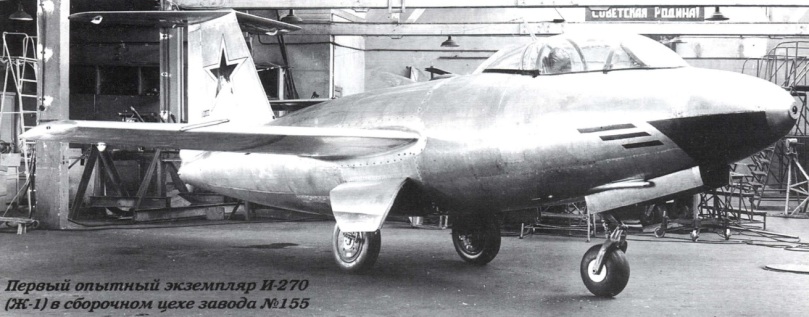
(The MiG I-270.)
Soviet rocket fighter projects during WWII
The Soviets were not strangers to the field of rocket-propelled planes. Just before the German invasion in 1941, the USSR fielded it’s first fighter design, the Bereznyak BI-1.
More a technology demonstrator than fighter, the BI-1 was built of fabric and wood, and had a 21’3″ wingspan. The BI-1 carried a combined half-ton of fuel and oxidizer, and little else. Eight were built, including one with a winter ski kit. Just like the Me-163 in Germany, Soviet impressions of the rocket-powered BI-1 were that it had excellent speed (485 kts) and a phenomenal rate-of-climb, but nearly useless endurance. None the less, fifty were ordered.
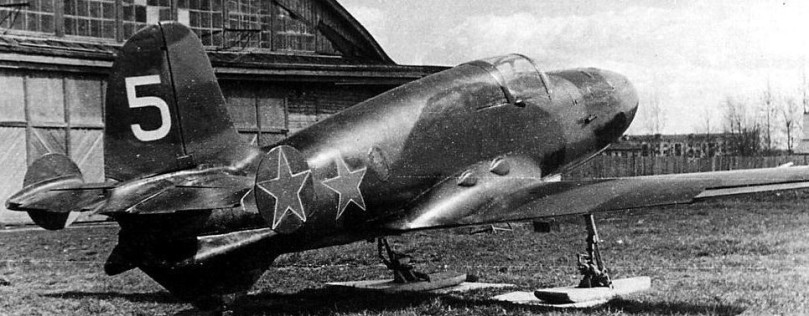
The BI-1’s career was short due to persistent problems encountered by the test pilots at high speed. There were several loss-of-control incidents capped by a fatal crash on 27 March 1943. The BI-1’s production order was cancelled. Hoping to solve the issue, Bereznyak continued sporadic flights with the remaining prototypes until captured German technology became available in 1945.
The Polikarpov design bureau was working on a separate rocket-powered fighter design during the war, until the bureau’s disbandment in 1944. No Soviet rocket-powered warplane saw combat during WWII.
The Me-163 during WWII
The Messerschmitt Me-163 was the world’s first rocket-powered fighter to enter squadron service, and the only one to ever see combat. This design originated with the designer Dr. Alexander Lippisch, and was then passed on to Messerschmitt. The engine was designed separately by Dr. Hellmuth Walter.
The Komet had a wingspan of 30’7″ (swept at 23°, one of very few swept-wing WWII warplanes) and was 19’2″ long. It weighed 4,190 lbs empty and 9,500 lbs ready for combat; the vast bulk of it’s total weight being fuel. The combat ceiling was 54,000′. The plane was armed with two MK-108 30mm guns with 60 rounds each. There was a FuG-16ZU radio (with a blade antenna on top of the fuselage) and FuG-25A IFF system.
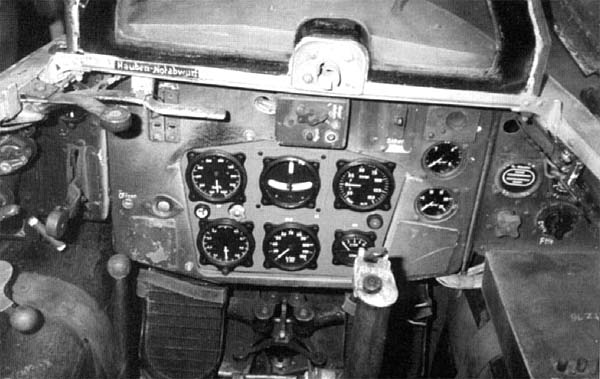
(Me-163 Komet cockpit)
The rated maximum speed was 518 kts although in a dive under power the Me-163 could exceed 543 kts. The Komet was the first plane in the world to exceed Mach 0.8 in level flight. (By comparison, the top speed of a P-51 Mustang was 380 kts.) By a wide margin the Me-163 was the fastest operational plane of WWII; whatever else it’s many limitations.
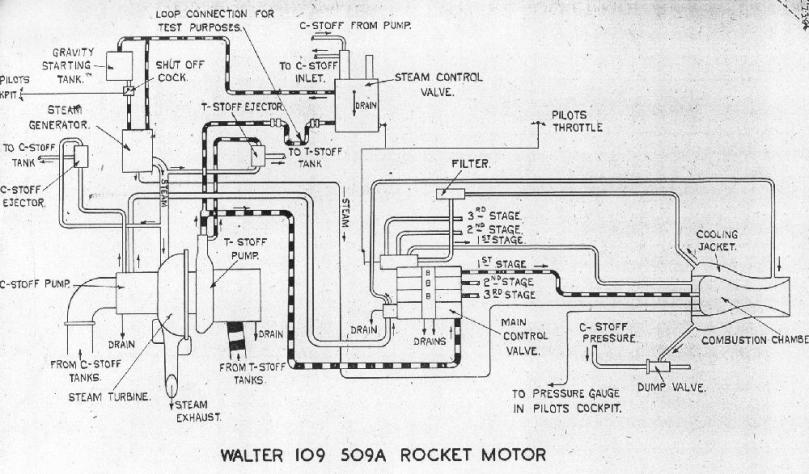
(Schematic of the HWK-109-509A rocket engine.)
The engine was a HWK-109-509A single-chamber, liquid-fuel rocket. The two-part fuel was the propellant “C-Stoff” (a hydrazine-hydrate/methanol blend) and the oxidizer “T-Stoff” (hydrogen peroxide mixed with potassium and cyanide). Forced together under pressure by a steam turbine, these two dangerous chemicals reacted very violently with each other. Extreme care had to be taken when fueling a Me-163 that residue or drops of one did not contact another. Several Me-163s blew up during fueling, as did an entire hangar. The T-Stoff oxidizer also reacted with cotton, leather, or human skin; and Komet pilots had to wear a special nylon oversuit.
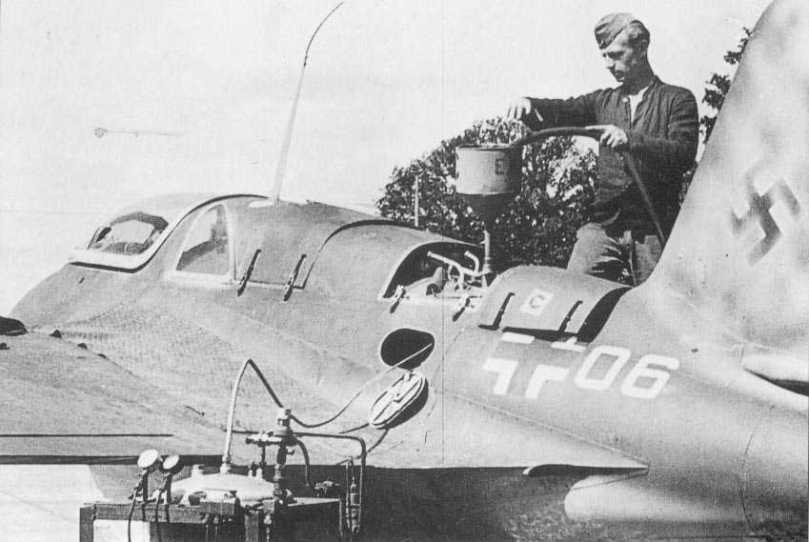
(Luftwaffe groundcrew fueling a Me-163 – in this case, the C-Stoff propellant component – during WWII.)
The “range” of the Komet was measured in minutes, not miles. The fuel was sufficient for 7 minutes 30 seconds of powered flight. In an average battle, this was enough for the Me-163 to reach the bombers, make one or two firing passes, and then turn for home as the fuel exhausted.
There were no sensors of any type and since it is not possible to run a generator with a rocket motor, electrical power came from a small airflow spinner on the plane’s nose. Because this only worked when the plane was airborne at a decent speed, a 24v battery was carried to power the controls during takeoff.
The Me-163 had a free-spinning tail wheel but no landing gear. For takeoff, a two-wheeled dolly was fitted to the belly. The pilot dropped it when airborne (this caused problems as sometimes the dolly would rebound off the runway and hit the Komet).
To land, a retractable steel skid was lowered.This arrangement was chosen as using retractable wheels would have made the fuselage “fatter” and the plane thus slower.
Landings were extremely dangerous. First the pilot had to get the gliding Komet aligned with the runway during his descent. The final approach had to be at a precise angle, as the plane was unpowered and there was no second go-around available. It was difficult to adjust for crosswinds during landing, and finally the Me-163 had to be kept on an even keel during the skid-out to prevent a wingtip from hitting the runway and cartwheeling the plane.
Assuming the landing was successful, a motorized tricycle called a Scheuchschlepper then lifted the Komet up and carried it back to the hangar.
The combat record of the Komet is usually grossly exaggerated either to the positive or negative. The Luftwaffe unit 1/ JG-400 was the only one to pass intact records to the western allies when Germany surrendered in May 1945. The records show it’s Komets scored 9 kills vs 15 losses (6 to American fighters and the rest to accidents). Throughout the whole Luftwaffe, there were a total of 17 victories scored by Me-163s: 15 American B-17 Flying Fortresses and 2 British Mosquitoes.
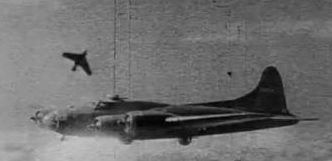
(A Luftwaffe Me-163 Komet whips past an American B-17 Flying Fortress during WWII. A typical tactic was to make a firing pass in a hard ascent, level off and make another pass in a gradual descent, then head for home.)
During it’s extreme high-speed attack, the Me-163 was generally safe. Allied fighters just tried to get out of it’s way (the Komet pilots were after bombers anyways). For Allied bomber crews, there was little they could do, they just had to hope that their plane wasn’t the one being targeted. For certain, no Allied fighter could chase down a Komet under power and the Me-163 was surprisingly maneuverable in addition to being tremendously fast.
Despite being “generally” safe at it’s high speed, the Me-163 was not invulnerable during powered flight and at one was shot down under power by a P-51 Mustang flown by US Army Cpt. Fred Glover in November 1944. Another Komet under power was shot down by the tail gunner of a B-17 Flying Fortress.
The Komet’s problems began when it’s fuel ran out, and this is when the losses took place. During the unpowered descent, the pilot had to concentrate on lining up with the runway to glide in and had limited options for evasive action. American fighter pilots quickly learned this, and would pounce on Me-163s after their fuel exhausted. Contrary to modern accounts that portray Me-163 tactics as clueless, the Luftwaffe had anticipated this, and developed a counter. With all fuel gone, the Me-163 was very wing-unloaded (like a recreational glider) and could do a high-speed dive followed by a snap pull-out at low altitude. If an enemy fighter were to follow it down, AA guns on the runway’s axis would ambush it then. Unfortunately this maneuver took a great deal of skill and courage on the Komet pilot’s part and was not always done, usually leaving the Me-163 a sitting duck in descent.
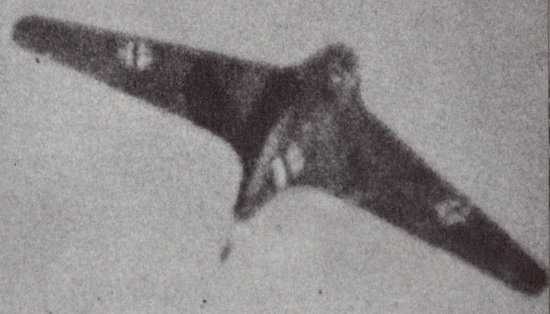
(It’s fuel exhausted, a gliding Me-163 is caught in the gun camera of an American P-47 Thunderbolt which then shot down the German plane.)
In turn the Allies also developed a “counter-counter-tactic” and stationed fighters at medium altitude to climb towards the descending unpowered Komet and intercept it during it’s glide.
Other tactics were less glamorous but even more effective. Once a Komet made a skid landing, it sat motionless on the runway until a Scheuchschlepper could drag it away. Allied planes simply strafed these Me-163s exposed on the runway.
On 1 May 1945, the day after Hitler’s suicide, all Me-163 operations ended so that surviving Komet pilots could fly more effective Me-262 or Fw-190 fighters. WWII in Europe ended eight days later.
About 300 Me-163s were built or at least started during WWII. In hindsight, the Komet was fascinating but nearly worthless from a military standpoint. It had a negative kill/loss ratio in WWII and in any case the seventeen Allied planes Me-163s shot down were dwarfed by the resources Germany spent designing, testing, building, and training on the type.
The Me-163S
This was an unpowered conversion training glider. The Luftwaffe intended to build two dozen but because of the worsening war situation, only one Me-163S was completed. By luck for the Soviets, it survived WWII and was captured intact in May 1945.
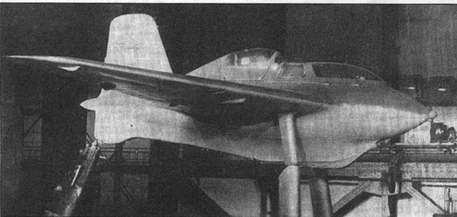
The Ju-240 / Me-263
This was to have been Germany’s second-generation rocket-powered fighter. It’s progress was hampered by the fact that the Me-163 itself was rushed into service faster than it should have been. The plane was originally started at Messerschmitt but then transferred to Junkers, where it was designated Ju-240. The design was an incremental improvement on the Me-163, with the main changes being the use of a normal wheeled undercarriage and a two-chamber engine. One prototype was built and the project was in turn shuffled back to Messerschmitt where it was redesignated Me-263. Unpowered glide tests were done but Germany’s worsening war situation led to it’s cancellation. The second and third prototypes never flew.
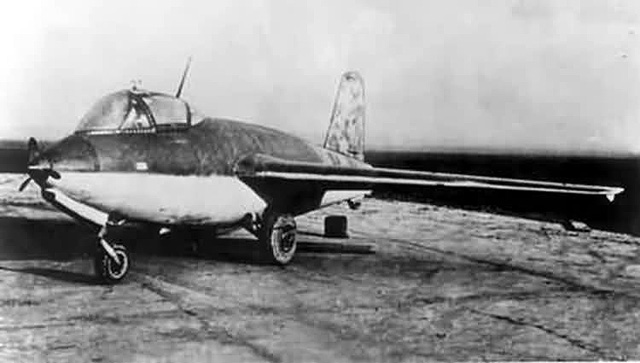
The Me-263 was forecast to be actually a bit slower than the Me-163 as it was “fatter” to house the wheeled landing gear, but it would have had better pilot visibility, nearly double the range, and been equally maneuverable.
The Soviet army captured the first prototype, the blueprints, and a cache of spare parts when it overran Dessau, Germany near the end of WWII.
The Seibel Si-346
This rocketplane was unrelated to the Komet family. The Luftwaffe intended it as a supersonic research plane. It was basically a flying engine, with the pilot laid prone. It had a Me-163-style landing skid. The most unique aspect was that because of the prone position and extreme speed, pilot egress in an emergency would have been impossible, so the whole cockpit section was a detachable pod.
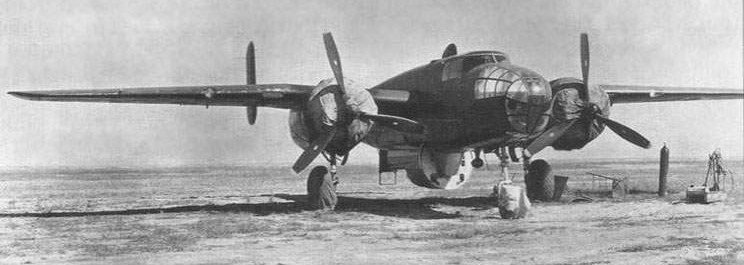
(The break-away pod for the prone-laying pilot was test-dropped in 1946 from a Soviet air force Lend-Leased B-25 Mitchell bomber which the USSR “neglected” to return to the USA after the end of WWII.)
Much like the Bell X-1 which Chuck Yeager broke the sound barrier with in 1947, the Si-346 had no takeoff ability and needed to be dropped from a mother plane.
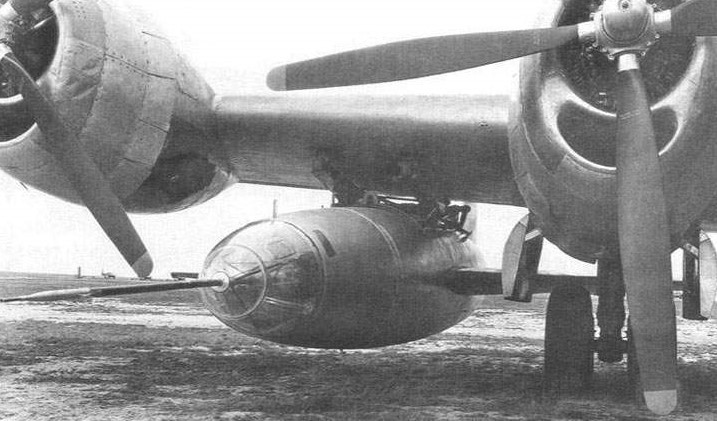
(The mother plane was a Tu-4 “Bull”, Tupolev’s unlicensed copy of the Boeing B-29 Superfortress.)
The Soviet army captured the prototype when they overran Halle, Germany near the end of WWII. The Si-346 was transported back to the USSR. Wind tunnel tests showed that it was unlikely to break the sound barrier, but none the less four more (three unpowered gliders and an actual rocket-powered example) were built. The German prototype captured in WWII was deemed unflyable and discarded.
The whole project was wracked with problems. The first unpowered glider was heavily damaged in a skid landing. Two of the other glider prototypes were slightly damaged by buffeting and vibrations while attached to the Tu-4. Although it achieved high Mach 0.9+ speeds, the actual powered example never quite broke the sound barrier. It crashed on 14 September 1951 and the project ended.
The Me-163 in the Soviet Union after WWII
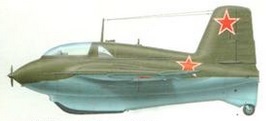
(artwork via Wings Palette website)
The Soviets captured intact two Me-163s at the end of WWII, along with the lone Me-163S trainer and the prototype Ju-240. Also captured were incomplete planes, spare parts, spare engines, and the full set of Ju-240 blueprints.
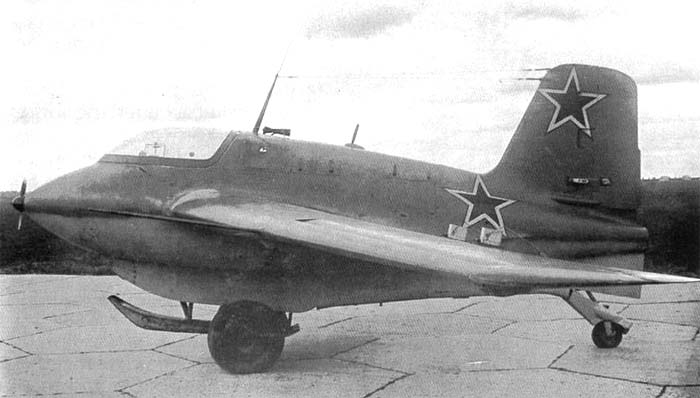
(One of the captured Me-163 Komets repainted in Soviet markings in late 1945/early 1946; showing the drop-away wheel dolly and landing skid extended.)
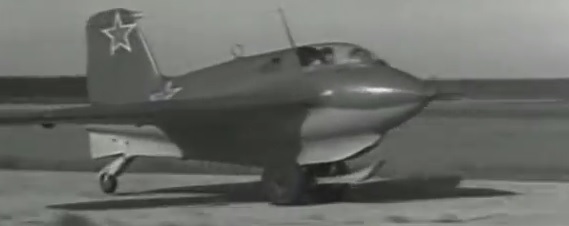
(A captured Me-163 Komet on the taxiway.)
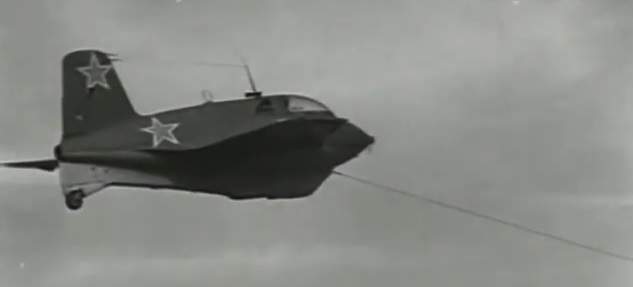
(The same plane in the air moments later, showing the tow cable.)
The small quantity of C-Stoff and T-Stoff captured in 1945 was used in bench tests of a dismounted HWK-509A. Diagnostic meters in the Soviet Union in 1945 were far below what was required and the bench tests were essentially wasted by the time the German-made fuel started to run out.
In November 1945, the Soviet air force requested the USSR’s chemical industry produce 23 tons of C-Stoff and 7 tons of T-Stoff, which they felt would be sufficient for ten partial (engine start airborne under tow) and five full (powered takeoff) flights on the captured Me-163s. At the time, the Soviet chemical industry was so backwards that this effort failed and very little was produced, hence, all flights on the captured German planes (both the Me-163S glider and actual Me-163 Komets) were either gliding-only flights or engine starts while in the air. A WWII-surplus Tu-2 “Bat” bomber was used as the tow plane.

(A captured Me-163 under tow in late 1945, during the post-WWII Soviet tests.)
Once at altitude, Soviet pilots found the Komet (which they called “The Carp”) to be a pleasant, highly-maneuverable plane. The tailless, swept-wing Me-163 did not present much of a challenge to master. Take-offs and landings were a different matter. The little Me-163 behaved poorly on the runway under tow, and it was hard to keep it straight and level before leaving the ground. The landing difficulties were the same for the Soviets after WWII as for the Germans during the war.
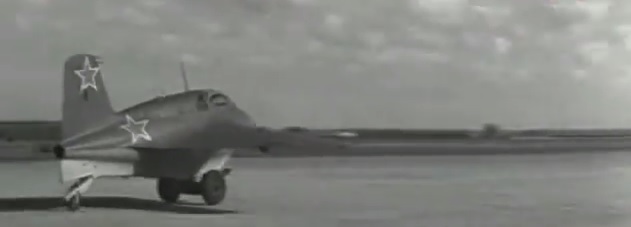
(A captured Me-163 making a towed takeoff. This photo illustrates the difficulty and danger as the right wheel has momentarily left the pavement. The plane had to be kept straight and level but was hostage to the towing Tu-2 “Bat” if something went wrong.)
The lone 2-seater training-glider Me-163S was invaluable and probably saved the lives of test pilots before they progressed to powered flight on the German planes.


Soviet follow-on’s to the Komet
Following the conclusion of the USSR’s Komet test program, Josef Stalin was enthusiastic about this WWII technology and on 26 February 1946 ordered the development of two Soviet rocket fighters. The Lavochkin bureau was assigned to design a limited-production night-fighter version with radar, and the Mikoyan-Gurevich (MiG) bureau was to design a mass-production daylight interceptor.
The Lavochkin I-162
Lavochkin’s plane merged concepts from the Me-163 and Si-346 along with some original theories. A sleek, small fighter, it retained the Komet’s dangerous wheeled drop-dolly and skid undercarriage system.
The I-162 used the same RD-2M-3V rocket as MiG’s I-270 design, but because it was smaller and more aerodynamic, Lavochkin predicted it would have nearly double the flight time under power; about 27 minutes.
It was intended to fit six one-shot ORO-82 recoilless weapons to be fired all in one pass; the designers felt this would give a 90%+ chance of a kill at 400 yards and better than 50/50 odds at 600 yards. One ORO-82 hit would be sufficient to bring down a B-29 Superfortress. The downside was that with no guns, the plane was defenseless against fighters.
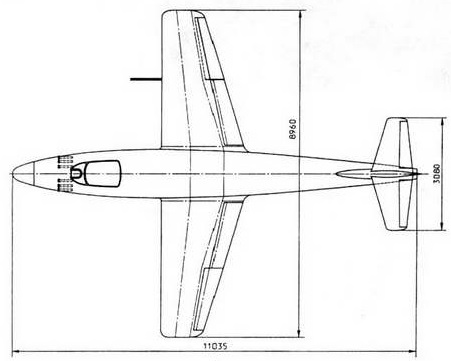
One “pre-prototype” developmental airframe was built. Wind tunnel tests showed it would be hard to fly. The airflow-spinner arrangement would be incapable of generating enough electricity to power both radar and the controls. Although it’s design was very clever, the I-162 had some features (glass-lined hoses, tanks stronger than 50 atmospheres, etc) which would be very expensive for Soviet industry to make as it continued to recover from WWII. In December 1946 the whole project was cancelled.
The Mikoyan-Gurevich I-270
MiG’s offering was a combination of sorts mixing features of the Me-163 Komet, the Ju-240/M3-263, the BI-1, and their own I-301 airframe (which later became the MiG-9 “Fargo” jet fighter). MiG was not at all enthusiastic about being assigned the duty of making a rocket fighter, but since nobody wanted to defy Stalin work began immediately in the spring of 1946. From the start, the bureau tried to keep the effort as simple as possible. Blueprints were completed in the autumn of 1946.
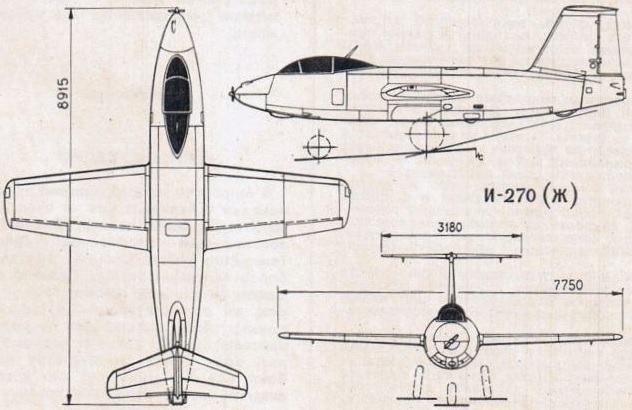
(Profiles of the I-270. The letter Zh in parenthesis is the eighth letter in the cyrillic alphabet and was MiG’s internal project code early on.)
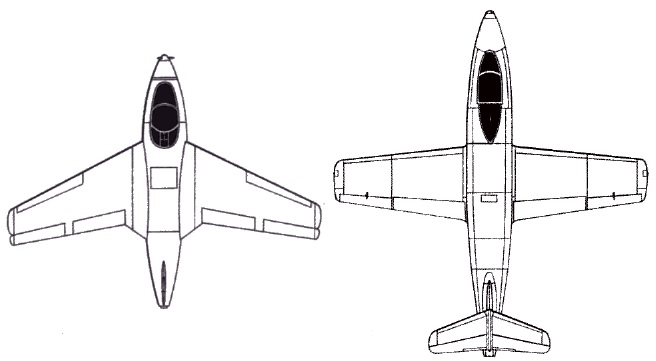
(Size comparison between the Ju-240/Me-263 and I-270.)
Throughout the I-270 project, Artyom Mikoyan (the M in MiG and the bureau’s co-founder and leader) was aided by his brother Anastas Mikoyan, a career Soviet politician and Politburo member. Anastas was able to “run interference” behind the scenes, quietly informing subcontractors of the project’s dim chances of success, all the while as Artyom worked on the effort to Stalin’s satisfaction. Part of Anastas Mikoyan’s portfolio was leading the USSR’s trade with “the capitalist world” and as such, he had knowledge of post-WWII aviation trends in the USA and Great Britain. He confirmed Artyom’s suspicion that rocket-powered planes were a bad idea.
The MiG I-270: basic description
The I-270’s engine was a two-chamber, liquid-fuel Glushko RD-2M-3V rocket. The “cruise chamber” (on top) allowed 9 minutes 3 seconds of flight and the “main” or “combat chamber” beneath it 4 minutes 15 seconds. In theory, this gave a maximum powered time of 13 minutes. Just like the Me-163 in WWII, part of this time would be consumed by travel to the target bombers and the need to realign with the base before the fuel exhausted, so the actual “usable” time was less.
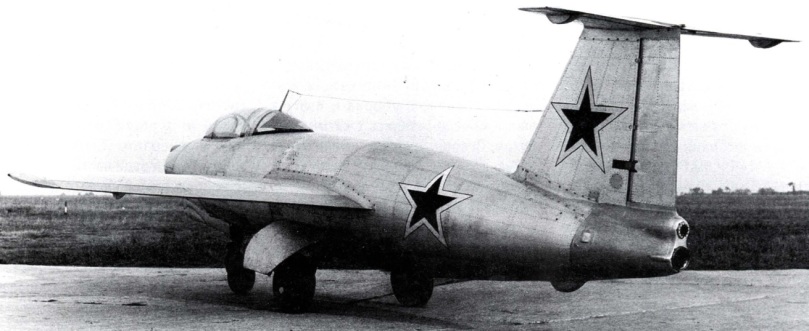
(The two chambers of the RD-2M-3V rocket engine of the I-270.)
The WWII German chemicals were abandoned. Instead, the plane used RFNA (96% nitric acid) as the oxidizer and plain kerosene as the propellant. RFNA was marginally safer than T-Stoff but none the less still corrosive, and also gave off noxious fumes. The I-270 airframe weighed 4,173 lbs but carried 4,740 lbs of combined propellant and oxidizer. Literally, it was a flying fuel tank.

(Engine start of a I-270. The smaller exhaust stream coming from the belly is the bleed valve of the steam turbine which pressurized the oxidizer and propellant into the chambers.)
From the start, the MiG team decided that regardless of any performance decrease or official instructions, their plane was absolutely not going to have a landing skid. During WWII, some Komet pilots met comet-like deaths when leftover fuel was ignited by sparks or bumps on the landing skid-out. For the I-270 a normal undercarriage was used, requiring a larger and less efficient airframe. The nose wheel was free-turning and since the I-270 obviously had no locomotion before takeoff or after landing, a truck was needed to move the plane on the ground.

Whereas Germany was forced to build the Me-163 partially of wood to conserve metal, the peacetime I-270 was riveted all-aluminum construction. The plane was coated with a special wax to retard corrosion from the toxic exhaust fumes. The I-270 was 28’9″ long and had a 25’5″ wingspan. The armament (which was never installed on either prototype) was two NS-23 23mm guns with 40 rounds each. This was considered sufficient as the plane would probably only have time for one or two firing passes anyways.
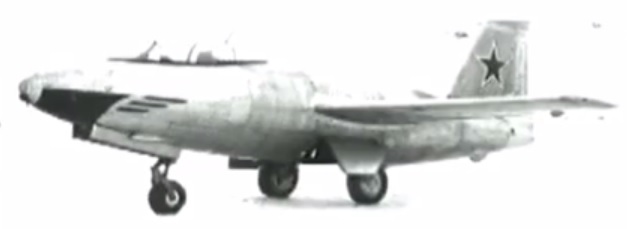
Originally, Artyom Mikoyan wanted 20° swept wings but at that time understanding of wing sweep was incomplete in the USSR, and straight wings were eventually chosen. The horizontal stabilizer on the tail was left swept as it performed equally well either way.
The pressurized cockpit had 8mm armor in the front. Like the WWII Me-163, no protection was provided to the cockpit rear, as it was assumed that any bullets from behind would explode the whole plane.
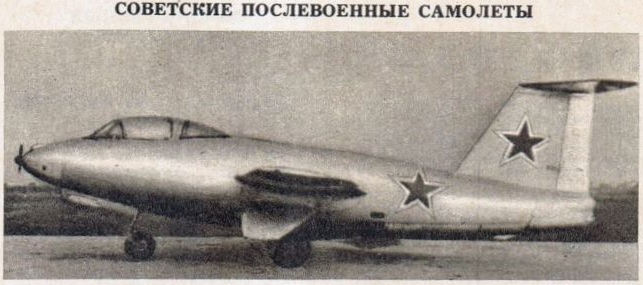
Just like the Me-163, there was no ability to generate electricity off the engine and to save time, MiG simply copied the Me-163’s nose airflow spinner – reportedly, the first prototype spinner was made of actual German parts captured at the end of WWII. The I-270 had a RSI-6 radio and basic SIC-1 gunsight, but little else in the way of electronics.
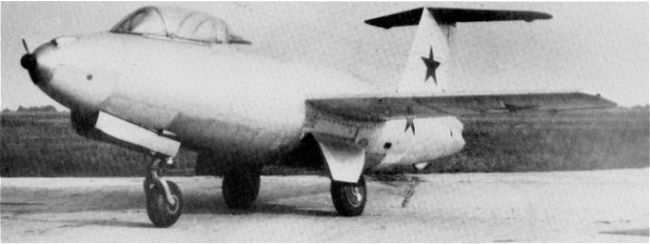
The landing run was 1,493′ and done at 104mph. The takeoff run was 2,685′ and was a remarkable experience to watch. The I-270 was already at 130 kts at the moment of liftoff and still accelerating. The rate-of-climb was absolutely unbelievable to the Soviets. An altitude of 15,000′ could be reached in 56 seconds from engine start on the runway; 32,100′ (the B-29 Superfortress’s ceiling) in 2 minutes 34 seconds, and above 48,000′ in 3 minutes. The I-270’s maximum ceiling of 57,751′ was reached in 4 minutes.
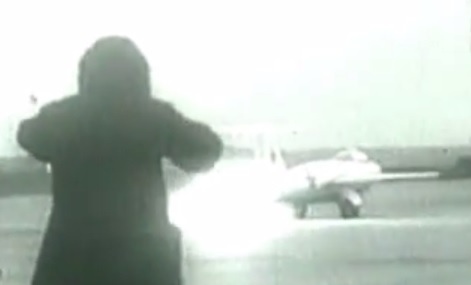
(The I-270 was extremely loud during it’s impressive takeoff run.)
To prepare I-270 test pilots, a WWII-surplus Yak-9 fighter was grotesquely modified with lead ballast inserted to serve as a makeshift training plane. This strange aircraft first flew in January 1947.
On 3 February 1947, the first prototype I-270 was flown as a glider (the engine had not yet completed qualification tests). Towed behind a Tu-2 “Bat”, unpowered I-270 flights allowed MiG to assess the type’s stability and landing characteristics. In May 1947, the engine was installed and tested on the ground. It caught fire, moderately damaging the first I-270.

(It’s fuel exhausted, one of the two I-270s glides in for landing.)
The second I-270 prototype was the first to make a full, powered-takeoff flight. On 2 September 1947, it made a 7-minute flight however it was severely damaged during the landing. MiG attributed the accident to pilot error.
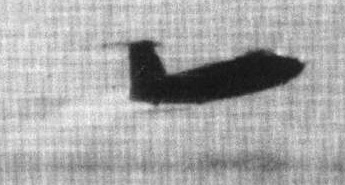
(A rare picture of an I-270 in the air under power.)
By then the first I-270 had been repaired. It first flew on 4 October 1947, making a 12-minute flight which was nearly the full endurance of the plane. Unfortunately while gliding in, the landing gear failed to lower and the test pilot had to make a belly landing in a muddy field, causing slight damage. During a ground check of the engine in the hangar in late October, it caught fire and caused new damage to the repaired plane. The next round of repairs was completed in late November but MiG opted to suspend flights as flying the I-270 was dangerous enough in summer, let alone in the Russian winter.
In January 1948, MiG quietly stated that the I-270 project was “suspended for improvement through further research”. It’s doubtful any meaningful new study was done, more probably the bureau was trying to kill time until Stalin lost interest in the rocket-fighter concept.
During the spring of 1948, the Soviet air force released it’s preliminary observations of the type.
♦The engine required a freshwater fill & flush after every flight. While this may have been fine at the well-equipped test facility in summer, it would be a different story at remote airfields in Siberia during winter.
♦There was no procedure for recovery from a failed engine midflight. This was viewed as a possibly “un-fixable” issue. The I-270’s airframe could not bear the weight stress of landing with some or most of the fuel, and in any case it would throw off the pilot’s glide path. The I-270 had no dump valves and even if it did, trying to expel oxidizer and propellant next to one another near the hot tail would almost certainly blow up the plane.
♦The I-270 had to be steam-cleaned every sixty days. Had the type gone into production this would be a big maintenance burden in the field.
♦Other than the astonishing rate-of-climb, the advantages of this sort of propulsion were eroding. During WWII, the Me-163 enjoyed a 164 kts speed advantage over the P-51 Mustang. By mid-1948, the I-270’s 540 kts top speed was only 21 kts faster than a P-80C Shooting Star.
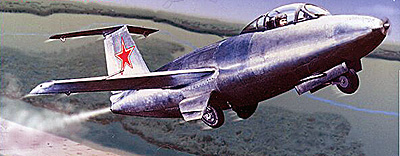
The one severely-damaged I-270 was never repaired and construction of the third cancelled. In May 1948, the remaining prototype resumed test flights, with the last coming on 30 May 1948, lasting 13 minutes and exploring the type’s full capabilities. The pilot made a successful landing but described the flight as “difficult”.
In 1948 Stalin’s whims drifted towards SAMs and jet planes and by then, Artyom Mikoyan was out of patience and wanted to pull the plug on what was clearly a terribly dangerous idea. He was fortunate that both himself and Mikhail Gurevich (the G in MiG) were co-winners of the 1947 Stalin Prize for the bureau’s MiG-9 “Fargo” jet fighter. Having just been publicly decorated for success, they reasoned that they would be spared Stalin’s temper if they dropped a less-advanced project. Mikoyan notified the Kremlin that “the I-270 project had ended”, and nothing was said about it by Stalin.
With that, it was the end of the line for a family tree which had started in Germany during WWII.

[…] Source: Soviet Komets after WWII […]
LikeLike
Reblogged this on Lest We Forget and commented:
Most interesting
LikeLike
Any pilot who flew one of these rocket powered aircraft needed to be very brave!
LikeLiked by 1 person
[…] FONTE: WWII Equipment Used After The War […]
LikeLiked by 1 person